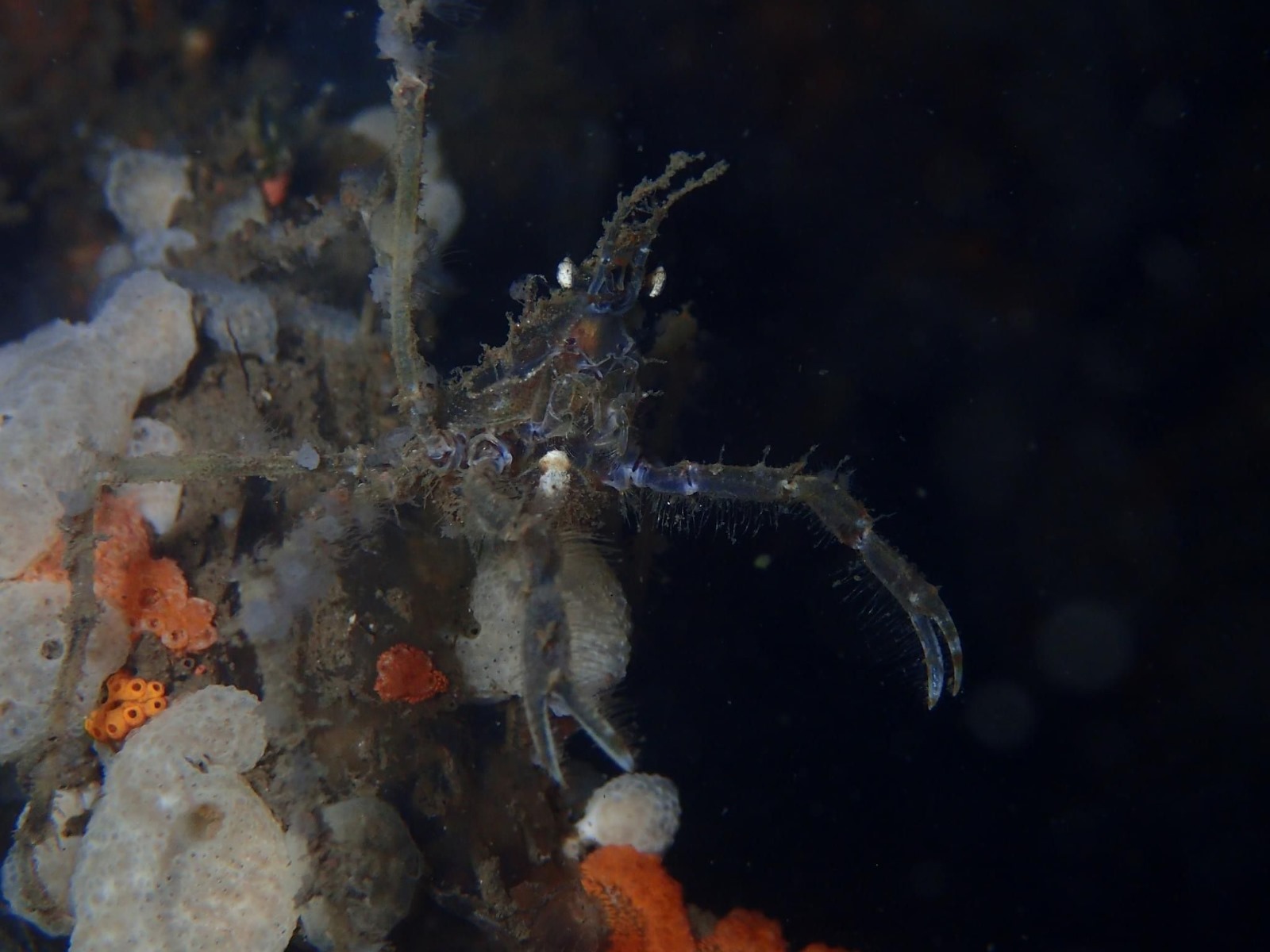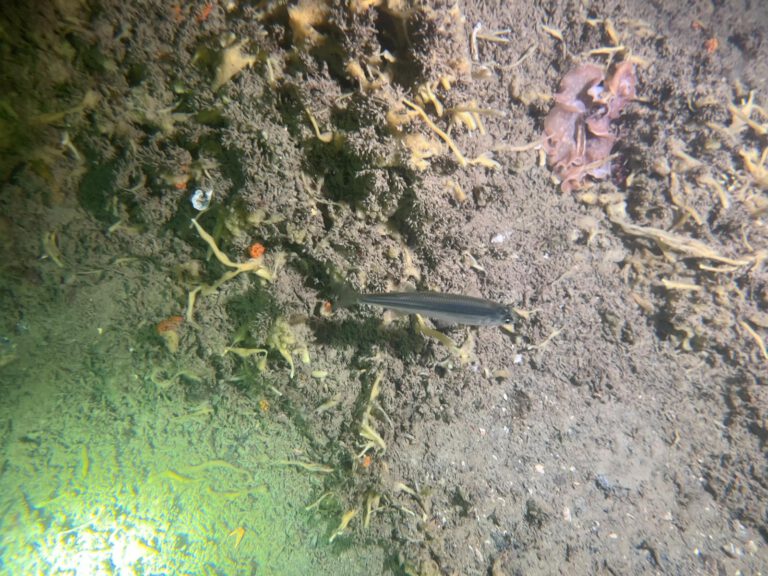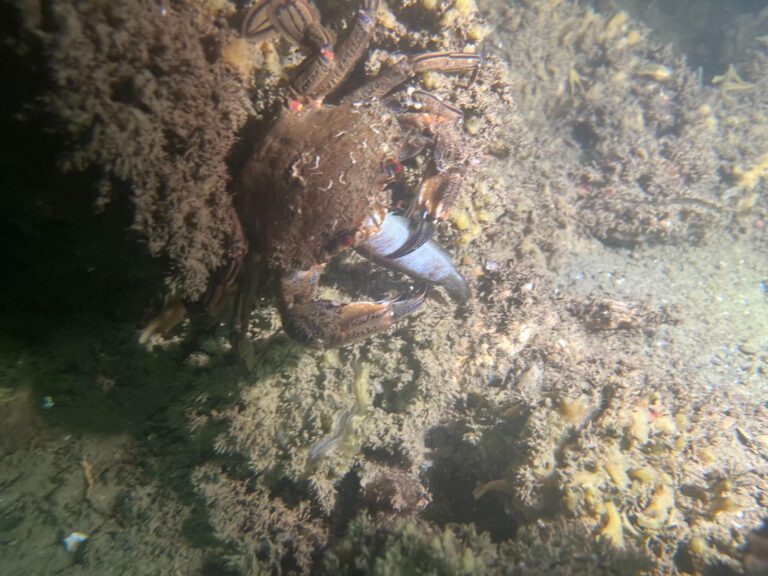Spider Crab (Hyas araneus)

Spider Crab (Hyas araneus) - Spinkrab
Taxonomy: The Spider Crab belongs to the Majidae family. This family includes many species known for their long legs and large bodies.
Species: The Spider Crab can grow up to 4 meters wide. It is one of the largest crabs in the world.
Reproduction: Female Spider Crabs carry thousands of eggs. They release them into the water in spring.
Habitat: Spider Crabs live in the North Atlantic Ocean. They prefer deep waters and rocky seabeds.
Diet: These crabs are scavengers. They eat plants, small fish and detritus. Their diet helps clean the ocean floor.
Conservation: Spider Crabs face threats from overfishing. Habitat destruction also impacts their numbers.
Unique Anatomy: Spider Crabs have long, spindly legs. Their shells are covered in barnacles and algae for camouflage.
Color Change: They can change color to blend into their environment. This ability helps protect them from predators.
Lifespan: Spider Crabs can live for up to 50 years. They grow slowly. Reaching maturity in about 10 years.
The Fascinating World of Spider Crabs
When exploring the ocean, many think of colorful fish or vibrant coral. However, some creatures are less known yet just as fascinating. The Spider Crab is one such creature. Its large size and unique appearance make it stand out in the underwater world.
What is a Spider Crab?
The Spider Crab is a marvel of nature. It has long legs and a broad shell. Its scientific name is Hyas araneus. This crab can weigh over 40 pounds. It can reach a leg span of nearly 13 feet. This makes it one of the largest crabs in existence.
Spider Crabs are found in cold waters. They often hide among rocks and plants. This helps them avoid predators. Their color-changing ability also aids in camouflage.
A Day in the Life of a Spider Crab
Spider Crabs are not fast swimmers. They move slowly along the ocean floor. They use their long legs to navigate rocky terrain. They mainly eat decaying matter, plants, and small animals. This diet keeps the ocean clean.
Spider Crabs are also social creatures. They can often be seen in groups. This behavior may help them find food and stay safe from predators.
Reproduction and Growth
The reproductive process of Spider Crabs is quite interesting. Females can carry thousands of eggs. These eggs are released in spring. The young crabs are tiny and vulnerable. They must survive on their own from the start.
Spider Crabs grow slowly. They can take up to ten years to reach maturity. This slow growth can impact their population.
Ecological Role: Cleaning the Ocean Floor
Spider Crabs play a vital role in their ecosystem. They help control the population of small animals. By doing so, they support the health of their environment. Their scavenging helps recycle nutrients back into the ocean.
Unfortunately, Spider Crabs are under threat. Overfishing and habitat loss are significant concerns. Protecting their habitat is essential for their survival.
Conclusion
The Spider Crab is a remarkable creature of the ocean. Its size, unique behavior, and ecological importance make it special. By learning about creatures like the Spider Crab, we can appreciate the ocean’s diversity. These animals deserve our protection and respect.







